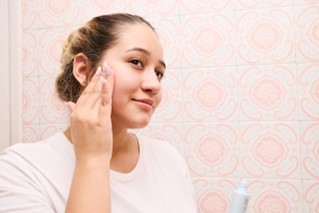First Choice Health Care in Galax, VA provides a comprehensive range of acute, primary, and specialized care services. Understanding the critical importance of sun protection, the healthcare professionals at First Choice prioritize educating their patients about the necessity of SPF and proper sunscreen usage. In the following article, First Choice Health Care delves into the sunscreen debate, examining the environmental impact and chemical safety of various products. By demystifying sunscreen labels and discussing the effects of sun exposure, this article will help individuals in selecting the right products for their needs, balancing health benefits with environmental considerations.
Sunscreen is a staple in many people’s skincare routines, hailed for its ability to protect against harmful UV rays and prevent sunburns and skin damage. However, in recent years, the use of certain chemical ingredients in sunscreen has sparked a debate surrounding their environmental impact and potential risks to human health.
First Choice Health Care Discusses Various Sunscreen Ingredients
Sunscreen products typically contain active ingredients that provide protection against UV radiation, as well as inactive ingredients that contribute to the product’s texture, stability, and efficacy. The two main types of sunscreen formulations are chemical (organic) sunscreens and physical (mineral) sunscreens.
- Chemical Sunscreens: First Choice Health Care in Galax, VA explains that chemical sunscreens contain organic compounds such as oxybenzone, octinoxate, avobenzone, and octocrylene, which work by absorbing UV radiation and converting it into heat. These ingredients are effective at providing broad-spectrum protection against both UVA and UVB rays.
- Physical Sunscreens: Physical sunscreens contain mineral ingredients such as zinc oxide and titanium dioxide, which create a physical barrier on the skin’s surface and reflect UV radiation away from the skin. These ingredients are less likely to cause skin irritation and are considered safer for sensitive skin.
Environmental Concerns with Chemical Sunscreens
While chemical sunscreens are effective at protecting against sunburns and skin cancer, concerns have been raised about their potential environmental impact, particularly on coral reefs and aquatic ecosystems. First Choice Health Care in Galax, VA reports that studies have shown that certain chemical sunscreen ingredients, such as oxybenzone and octinoxate, can be harmful to marine life and contribute to coral bleaching and coral reef degradation.
- Coral Bleaching: Some product ingredients can disrupt coral’s reproductive processes, interfere with its ability to photosynthesize, and make it more susceptible to bleaching. Coral bleaching occurs when coral expels the algae living in its tissues, leading to the loss of vibrant colors and the eventual death of coral colonies.
- Hormone Disruption: Some products have been found to act as endocrine disruptors, interfering with hormone function in marine organisms such as fish, sea urchins, and coral. This disruption can affect reproductive health, growth, and development in these species, ultimately impacting marine ecosystems.
- Bioaccumulation: First Choice Health Care in Galax, VA also reports that chemical sunscreen ingredients can accumulate in aquatic environments through runoff from beaches, swimming pools, and wastewater discharges. Once in the water, these compounds can persist for long periods and accumulate in the tissues of marine organisms, potentially reaching concentrations that pose a risk to their health.
Safety Considerations for Human Health
In addition to environmental concerns, questions have been raised about the safety of certain chemical sunscreen ingredients for human health. While the FDA has approved the use of chemical sunscreen ingredients in over-the-counter products, some studies suggest potential risks associated with their use, particularly with prolonged or frequent exposure.
- Skin Irritation and Allergic Reactions: First Choice Health Care in Galax, VA notes that ingredients such as oxybenzone and avobenzone have been linked to skin irritation, allergic reactions, and photosensitivity in some individuals, especially those with sensitive skin or a history of skin conditions such as eczema or dermatitis.
- Hormone Disruption: Similar to their effects on marine organisms, some chemical sunscreen ingredients have been found to act as endocrine disruptors in humans, interfering with hormone function and potentially contributing to reproductive health issues, thyroid disorders, and developmental abnormalities.
- Photodegradation: Certain chemical sunscreen ingredients, such as avobenzone and octocrylene, are known to degrade upon exposure to UV radiation, forming potentially harmful byproducts that can penetrate the skin and cause cellular damage. This process, known as photodegradation, raises concerns about the long-term safety of these ingredients.

Choosing Safer Options
First Choice Health Care in Galax, VA explains that given the environmental and safety concerns associated with chemical sunscreens, many consumers are seeking out alternative options that offer effective sun protection without the potential risks. Here are some tips for choosing safer sunscreen products:
- Opt for Mineral Sunscreens: Choose sunscreen products that contain mineral ingredients such as zinc oxide and titanium dioxide, which provide broad-spectrum protection against UV radiation without the environmental and safety concerns associated with chemical sunscreens.
- Look for Reef-Friendly Formulations: Seek out sunscreen products labeled as “reef-friendly” or “coral-safe,” indicating that they do not contain oxybenzone, octinoxate, or other harmful chemicals that can contribute to coral reef degradation.
- Read Ingredient Labels: Take the time to read the ingredient labels of sunscreen products and avoid those containing oxybenzone, octinoxate, octocrylene, and other chemical sunscreen ingredients of concern. Look for products that use natural or organic ingredients and are free from artificial fragrances, dyes, and preservatives.
- Consider Water-Resistant Formulas: If you’ll be spending time in the water, choose water-resistant sunscreen formulations that provide extended protection against sun exposure without washing off easily. Be sure to reapply sunscreen regularly, especially after swimming or sweating.
Conclusion: Balancing Sun Protection and Environmental Health
First Choice Health Care in Galax, VA reports that the sunscreen debate underscores the importance of striking a balance between sun protection and environmental and human health. While sunscreen is essential for preventing sunburns, skin cancer, and premature aging, it’s crucial to choose products that offer effective protection without harming marine ecosystems or posing risks to human health. By opting for mineral sunscreens, reef-friendly formulations, and safer ingredients, you can enjoy the benefits of sun protection while minimizing your environmental footprint and safeguarding your well-being. Together, we can protect our skin, preserve our planet’s precious marine resources, and promote a healthier, more sustainable future for generations to come.









